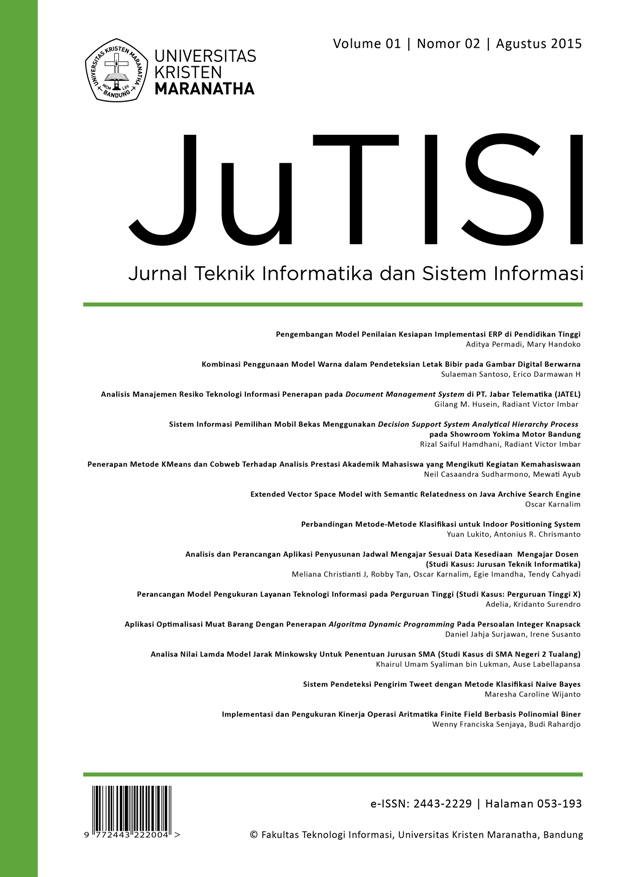Perbandingan Metode-Metode Klasifikasi untuk Indoor Positioning System
Isi Artikel Utama
Abstrak
Indoor Positioning System can provide position and navigation guidances inside a building. This paper discusses about systematic comparison between K-Nearest Neigbors and Naïve Bayes Classifier over WiFi-based Indoor Position System dataset. The dataset is collected using a custom Android Application, which able to receive and record WiFi signal strengths from the surrounding WiFi hotspots in UKDW campus. The dataset consists of 11658 Received Signal Strength (RSS) data from 41 public locations in UKDW campus. We use 10-folds cross validation and T-Test with 0.05 significance level to compare classification accuracy between K-Nearest Neigbors and Naïve Bayes classifier. Based on the experiment result, we can conclude that K-Nearest Neighbors classifier produces better classification accuracy (83.58%) than Naïve Bayes (61.52%).
Unduhan
Data unduhan belum tersedia.
Rincian Artikel
Cara Mengutip
[1]
Y. Lukito dan A. R. Chrismanto, “Perbandingan Metode-Metode Klasifikasi untuk Indoor Positioning System”, JuTISI, vol. 1, no. 2, Agu 2015.
Terbitan
Bagian
Articles
This is an open-access article distributed under the terms of the Creative Commons Attribution-NonCommercial 4.0 International License (https://creativecommons.org/licenses/by-nc/4.0/) which permits unrestricted non-commercial used, distribution and reproduction in any medium.
This work is licensed under a Creative Commons Attribution-NonCommercial 4.0 International License.

